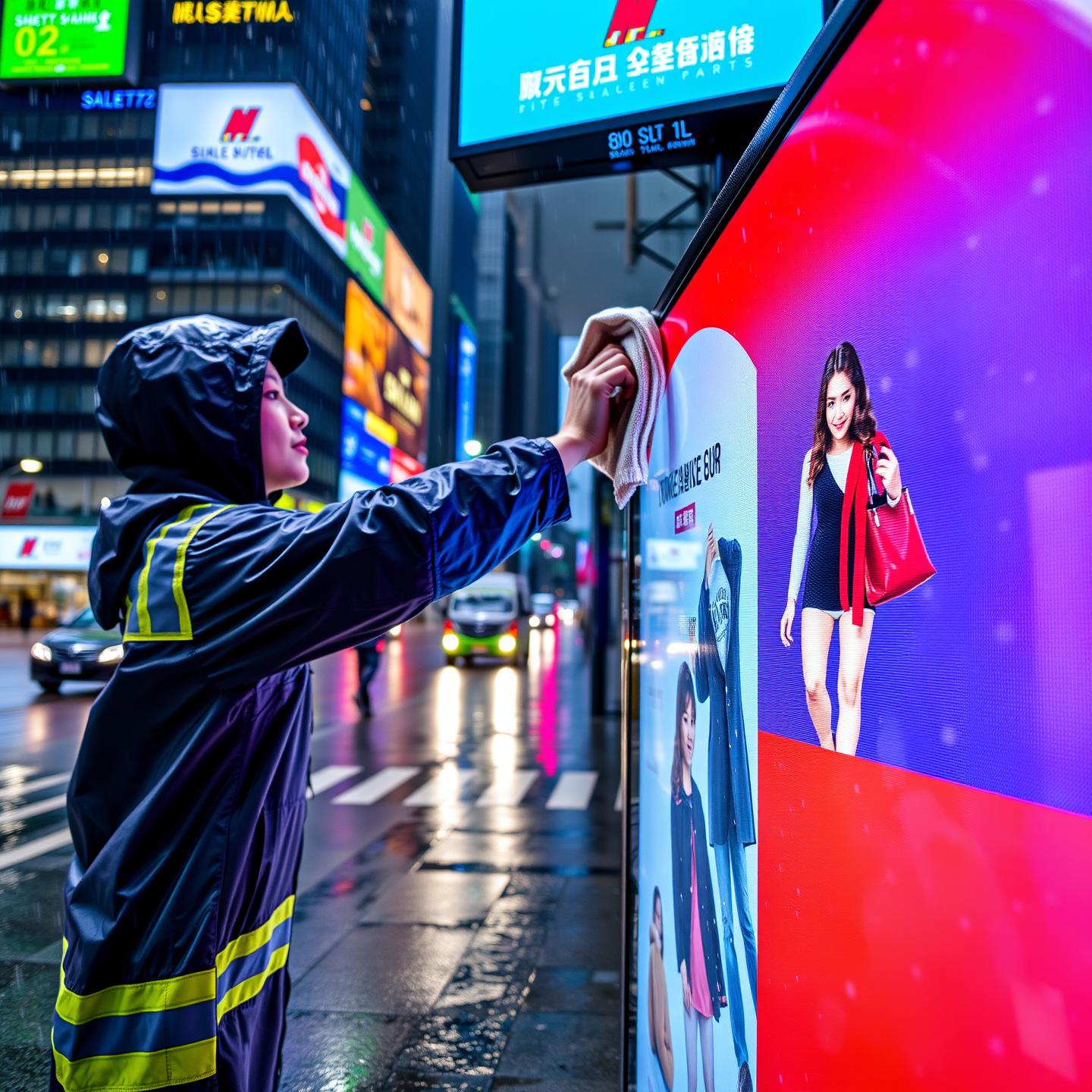


Why Proper LED Screen Cleaning Matters
LED screens are long-lasting (up to 100,000 hours of use), but dust, fingerprints, and grime can reduce visibility, cause overheating, and even shorten their lifespan. Regular cleaning ensures crisp visuals, energy efficiency, and durability—critical for advertising billboards, retail displays, and stage rentals.
Tools You’ll Need
Microfiber cloth (lint-free, non-abrasive)
Distilled water (prevents mineral streaks)
Isopropyl alcohol (70% or lower concentration) optional
Soft-bristle brush (for crevices)
Compressed air canister (for dust removal)
Avoid: Paper towels, ammonia-based cleaners, or harsh chemicals—they can scratch or damage anti-glare coatings.

Step-by-Step Cleaning Guide
1. Power Off and Cool Down
Turn off the LED screen and unplug it.
Wait 15–20 minutes to avoid electrical risks and thermal shock.
2. Remove Loose Dust
Use a compressed air canister to blow dust from edges, vents, and modules.
Gently brush stubborn debris with a soft-bristle brush.
3. Prepare the Cleaning Solution
Mix distilled water with a 1:1 ratio of isopropyl alcohol (for disinfecting).
For sensitive screens: Use water only.
4. Wipe the Screen
Lightly dampen the microfiber cloth (never spray directly on the screen).
Wipe in gentle, vertical motions—avoid circular movements to prevent streaks.
For tough stains, reapply the solution and repeat.
5. Dry Thoroughly
Let the screen air-dry for 5–10 minutes.
Use a dry microfiber cloth to remove residual moisture.
What NOT to Do
❌ Don’t press too hard—LED modules are delicate.
❌ Avoid excess moisture—water seepage can damage internal circuits.
❌ Skip abrasive tools—steel wool or scrubbing pads cause permanent scratches.
FAQ Section
Q: How often should I clean my LED screen?
A: Dust weekly; deep clean every 3–6 months (or more frequently in dusty/humid environments).
Q: Can I use vinegar to clean LED screens?
A: No—its acidity can degrade protective coatings. Stick to distilled water or alcohol solutions.
Q: What if my screen has dead pixels after cleaning?
A: Contact a professional—physical damage may require module replacement.
Pro Tips for Long-Term Care
Install screens in low-dust areas or use protective covers.
Schedule routine inspections for early detection of dirt buildup or damage.
For outdoor LED displays, invest in IP65-rated waterproof screens to simplify maintenance.
Final Takeaway
Proper cleaning preserves your LED screen’s brightness, color accuracy, and lifespan. By following these steps, you’ll avoid costly repairs and ensure stunning visuals for years.